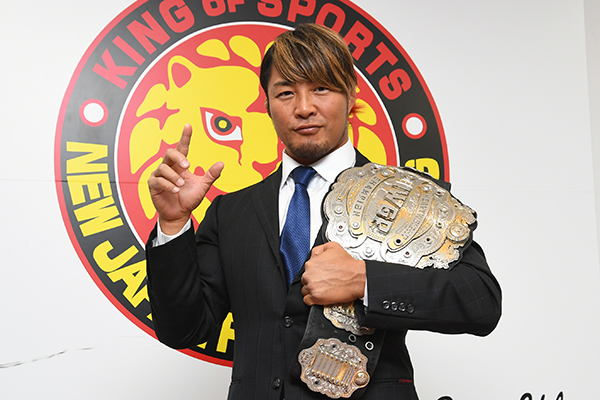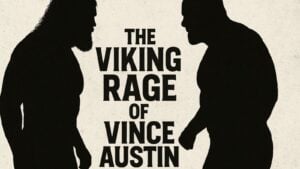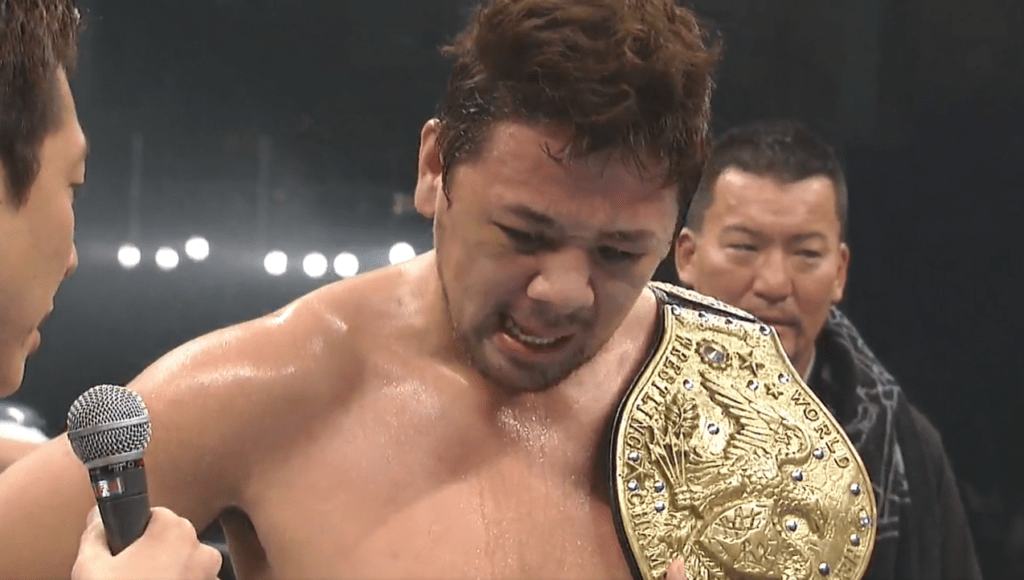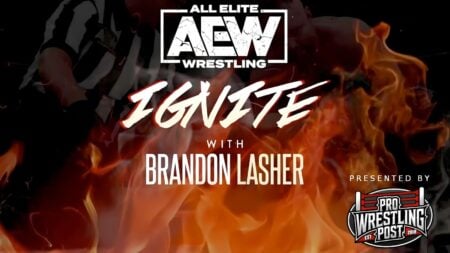When Shinsuke Nakamura defeated Kurt Angle to unify his championship with the IGF version of the belt, it marked an end of an era.
It marked the end of Antonio Inoki’s influence on New Japan Pro-Wrestling and their most cherished championship. No longer would New Japan Pro-Wrestling have his main event championship desecrated by non-wrestlers in failed wrestling/MMA crossover experiments.
Instead, it would be about pro wrestling, like it was in the past. This is History of the IWGP Heavyweight Championship Part 4.
____________________
But this new age was about New Japan’s future, and unfortunately for Nakamura, he wasn’t meant to be part of that future. At least not yet.
History of the IWGP Heavyweight Championship – Part 4
Multiple Interwoven Stories
As IWGP Heavyweight Champion, Nakamura was supposed to represent the cream of the crop in NJPW. And while he did boast an impressive resume at the time, there was one thing he sorely lacked: charisma.
This was not the wacky King of Strong Style that most modern wrestling fans know. Nakamura circa 2008 was a bland, stereotypical ‘angry MMA fighter’ type. Picture him as a skinny Brock Lesnar, only without the magnetism or aura of badassery.
Nakamura was champion, but he symbolized NJPW’s past, not their future. The man that would carry NJPW into the future was none other than Nakamura’s rival. It would be his former tag team partner, Hiroshi Tanahashi.
Tanahashi was, in many ways, Nakamura’s mirror image. Where Nakamura was bland and generic, Tanahashi was energetic and warm.
Nakamura’s wrestling style focused on strikes and a good ground game. Tanahashi flew like Eddy Guerrero and loved to use creative suplexes. Nakamura was aloof and guarded. Tanahashi was basically a Japanese John Cena in terms of fan connection.
The Tanahashi Movement
And so, NJPW’s decision-makers decided that Tanahashi, not Nakamura, would be the one to carry the company going forward.
But there were still some issues about making Tanahashi into the ace. He had two prior reigns as IWGP Heavyweight Champion, but neither of those were ace or star-making performances.
That’s because there were still some people among NJPWE’s faithful that didn’t like what Tanahashi represented. His style, charisma, and overall presentation all seemed alien to them.
They had become accustomed not just to Inoki’s obsession with MMA, but an overall wrestling product structured and focused on martial arts, submissions, and, generally, a ‘realistic’ image.
Tanahashi barely fit into any of those categories, which made some people question him being the ace of a company that had always branded itself as the ‘King of Sports.’
Thus, to convince those fans, NJPW’s bookers found the perfect solution: Keiji Mutoh.
Creating the Ace
Mutoh is, in many respects, the Japanese version of the Undertaker. He’s a time-tested, beloved veteran that had a profound impact on the wrestling scene in his home country and is known worldwide for his outlandish gimmicks and never-ending dedication to pro wrestling. And NJPW used him perfectly.
About four months after his victory, Nakamura was defeated for the title by Mutoh. This setup a long-term storyline intended to elevate Tanahashi not only above Nakamura but above Mutoh as well.
You see, not only was Mutoh a legend in NJPW and Japan in general. He was also Tanahashi’s mentor. Much of what Tanahashi learned as a pro wrestler, he learned from Mutoh.
And to this day, Mutoh is widely regarded as one of the true masters of ring psychology and storytelling in pro wrestling.
So, to elevate Tanahashi to new heights, Mutoh went on a tear as IWGP Heavyweight Champion. This was his first reign in almost a decade and his fourth overall.
It lasted 252 days and culminated in a singles match between Mutoh and Tanahashi at Wrestle Kingdom III.
That match was a piece of wrestling perfection. It was a storytelling masterpiece of the student beating the master. And Tanahashi had a monumental mountain to climb in Mutoh.
The Shining Wizard
Despite his advancing age, Mutoh wasn’t known as ‘the cross wizard’ for nothing. His wrestling style was simplistic but focused.
He loved to attack his opponent’s knees as much as possible, to set them up for either a leg-targeting submission hold or his patented Shining Wizard. And Tanahashi had to endure this like virtually all of Mutoh’s fallen opponents.
But unlike them, Tanahashi wouldn’t go down so easily. Despite getting his knees almost completely destroyed, Tanahashi somehow managed to muster through his bottomless well of endurance and managed to beat Mutoh in the main event of Wrestle Kingdom III.
In doing do, the torch had been passed. The age of the old ‘strong style’ was over, and something new had risen in its place. Tanahashi had been crowned IWGP Heavyweight Champion in a victory that actually meant something.
It was time for the new Ace of New Japan.
Or so everyone thought.
History of the IWGP Heavyweight Championship – Part 4
Nakamura catches up with the Ace
Although Tanahashi was now the ace of New Japan, he still had a wide field of contenders to deal with.
He was also stuck dealing with some questionable booking, as some of the people that were in Inoki’s inner circle during the height of his power still held sway in the company.
One of those people made the decision to have new ace Tanahashi lose his crown to the then 42-year-old Manabu Nakanishi.
This was a puzzling decision as Nakanishi was something of a lower-card lifer in NJPW who stuck with NJPW, even after the major talent exodus of the late 90s and early 2000s brought about by Inokism.
Yet his loyalty was overlooked back then, so someone in NJPW must’ve felt that this loyalty should be rewarded.
Thus, Nakanishi beat Tanahashi four months into his third reign (which had included impressive title defenses over Nakamura, Kurt Angle, and Hirooki Goto).
Alas, Nakanishi’s reign would only last 45 days and zero defenses, as he lost it back to Tanahashi at Dominion 2009.
And this next reign of Tanahashi’s would copy Nakanishi’s, as it lasted only 58 days (and one defense against NOAH’s Takashi Sugiura) before Tanahashi was forced to vacate the title after fracturing his eye socket.
With Tanahashi out of the title picture, his rival Nakamura rose to the occasion and became champion for the third time. But this time, Nakamura drew the ire of the craziest man in New Japan, Antonio Inoki.

An On-Screen Presence
Even though Inoki no longer held any power in NJPW, he was still an on-again-off-again on-screen figure that many people remembered.
After all, he had built an entire company in his image, made himself its biggest star and focal point, and also enjoyed an…interesting…career in politics. Thus, Inoki sicked one challenger after another onto Nakamura in the hopes of beating him.
And so, from September 2009 to May 2010, Nakamura defeated six different challengers for the IWGP Heavyweight Championship. It was the most out of any single reign since Yuji Nagata’s year-long reign in 2002-2003.
And during this reign, Nakamura felled the likes of Shinjiro Otani, Yuji Nagata, Nakanishi, Hirooki Goto, Yoshihiro Takayama (at Wrestle Kingdom IV, making this a rematch from their 2004 Dome show match six years earlier), and, of course,, Hiroshi Tanahashi.
Nakamura slowly began a transition of his own with these victories, but not in the way Inoki had wanted.
Nakamura was becoming less the aloof, bland fighter and more the King of Strong Style that would end up becoming one of the most charismatic wrestlers in NJPW history.

History of the IWGP Heavyweight Championship – Part 4
Holding Pattern
Nakamura’s run as IWGP Heavyweight Champion ended after 218 days. He lost the title to Togi Makabe, another NJPW lifer. But unlike Nakanishi, Makabe had a niche role in the roster.
Whereas most of NJPW’s wrestlers were either grapplers, pure strikers, or power wrestlers, Makabe was a Bruiser Brody-type brawler with the nickname ‘the Unchained Gorilla.’ Makabe was wildly popular with NJPW’s fans, and thus he earned a title reign of his own.
But this reign was nothing too special, lasting only 161 days and three defenses. But the man Makabe lost to was definitely someone special: Satoshi Kojima.
Kojima was a big deal to many Japanese wrestling fans. He began his career with NJPW, but he followed Keiji Mutoh to All Japan in 2002. Kojima had spent eight years in that company.
There, he enjoyed immense success and is also the first person to hold the IWGP Heavyweight Championship and AJPW’s Triple Crown Heavyweight Championship simultaneously. Many fans knew and respected Kojima, and he gave further credibility to NJPW’s top title.
But his reign was purely transitional. Despite retaining the title against Nakamura, Kojima lost it at Wrestle Kingdom V to Hiroshi Tanahashi.
In doing so, Tanahshi’s put down perhaps the last big wrestling stars of the 2000s that anyone still thought a bigger star than him.
With that victory, Tanahashi became not just a 5-time IWGP Heavyweight Champion, but also possibly THE biggest wrestling star in Japan, period.
History of the IWGP Heavyweight Championship – Part 4
Tanahashi’s greatest reign

This fifth reign of his would end up shattering almost every important record important in Japanese pro wrestling.
It was the longest continuous reign in fifteen years, beating Nagata’s reign by almost two weeks in length.
During that reign, Tanahashi made a record with eleven successful defenses, more than any other champion in NJPW history.
The list of wrestlers that failed to beat Tanahashi during this reign includes, in order: Kojima, Nagata, Nakamura, Charlie Haas (in NJPW’s first-ever tour of the United States), Hirooki Goto, Giant Bernard, Nakamura (again, after Nakamura won the 2011 G1 Climax tournament), Tetsuya Naito, Tory Yano (who stole the physical belt), Yuji Nagata, and finally Minoru Suzuki at Wrestle Kingdom VI.
With 2012 starting on such a high note, it seemed like there was no one in NJPW, or anywhere for that matter, that could stop Tanahashi.
He was on top of the wrestling world, a true ace. Unfortunately for him, he was about to get challenged by the most unlikely of people.
In turn, that challenge would be the starting point of what is hands down the single greatest pro wrestling rivalry of the 21st century.








